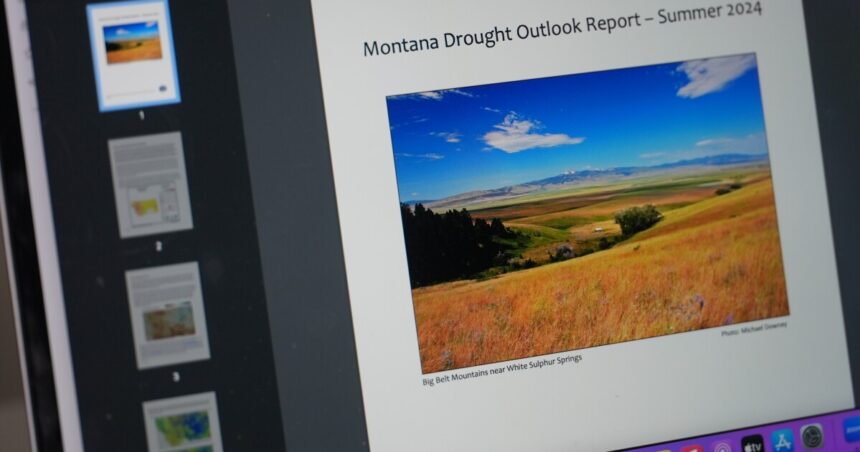HELENA — Montana leaders are warning the state could be facing “widespread drought” by the end of this month.
The Montana Department of Natural Resources and Conservation released its annual drought outlook this week.
The report says much of the state had almost no snow at the start of January, and above-average precipitation through early March wasn’t enough to overcome the low early snowpack. It says, that after cooler temperatures and higher-than-average precipitation in May, the situation improved. However, June — typically Montana’s wettest month — was much drier than average.
“Depending upon accumulated precipitation and temperatures over the next 4 to 6 weeks, the net deficits in June could result in the onset of widespread drought,” the report said. “In recent years, July has trended drier than average. Given this year’s dry June, consequences of hot and dry July could be severe.”
The report says about 40% of the state is currently in moderate to severe drought – particularly in western Montana. Another more than 50% is abnormally dry. Leaders point to a three-month outlook from the National Weather Service, which says Montana’s likely to see above-average temperatures and below-average precipitation.
According to the report, the chance of significant wildfires remains normal for now.
“Moisture that fell in May is expected to delay the start of significant fires around the Northern Rockies, especially east of the Continental Divide while continuing dryness through the summer and early fall months is expected to extend the end of fire season,” it said.
The report says Montana’s Vegetative Health Index – a measure of how dry plants are – is worse than it was last year at this time, but still better than the three years before that. It says streamflows have held up “surprisingly well,” but that they’re likely to drop off quickly if the state doesn’t receive average or above-average precipitation in the next month. Soil moisture across the state has generally improved from recent years at this time, but it’s beginning to decline.
“These combined drought indicators offer a negative drought outlook for the remainder of the summer and early fall,” the report concluded. “Conditions could worsen quickly in the event of much above average temperatures and below average precipitation in the coming weeks and months.”





